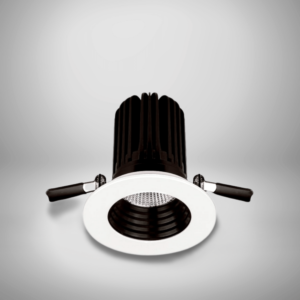The construction sector is accountable for a massive 80% of environmental impact in many fields. As awareness of sustainability grows, the imperative to make informed choices about building materials intensifies. Environmental Product Declarations (EPDs) emerge as a pivotal tool in this context. They offer a standardised method to evaluate the environmental footprint of products over their life cycle. This facilitates sustainable decision-making for manufacturers, architects, and designers.
This article will dissect the significance of EPDs, discuss their data interpretation, and highlight their advantages in the construction industry. Grasping the essence of EPDs enables us to strive for a sustainable built environment. It necessitates considering the full life cycle of the materials employed.
What is an Environmental Product Declaration (EPD)?
An Environmental Product Declaration (EPD) is a detailed, verified document. It sheds light on the environmental impact of a product from start to finish. This includes everything from raw material extraction to disposal or recycling. The aim of an EPD is to help manufacturers share the environmental footprint of their products. It also aids architects, designers, and other types of specifiers in making sustainable choices for construction projects.
Definition and Purpose of an EPD
EPDs are valid for five years but can be extended for another five if the manufacturing process remains unchanged. Over 250 EPDs have been published, with many more in development. They come in various types, catering to different needs and audiences.
Minor changes to EPDs, like colour variations, can be grouped together. However, each product’s environmental impact must be clearly stated. EPD operators can collaborate with other programs worldwide to ensure consistency and address new environmental challenges.
For products needing individual EPDs, generator tools offer a cost-effective solution. These tools allow for the creation of multiple EPDs with minimal input. EPDs are Type III environmental declarations, following ISO 14025. They provide standardised information on the life cycle impacts of a product.
EPDs are verified and registered independently, based on industry-standard product category rules (PCRs). They cover various impact categories, including global warming potential, ozone depletion, and acidification potential, among others.
In the U.K., EPD registries are managed by organisations like BRE Global, WRAP, and the Environment Agency. An EPD must comply with ISO standards and industry-standard PCRs. It requires third-party certification of the LCA process and a clear functional unit description. A comprehensive list of life cycle stages is also included.
EPDs facilitate comparisons between different flooring materials or suppliers. For instance, they can be used to evaluate Vinyl Tile against Ceramic Tile or to compare Reinforcing Steel #1 with Reinforcing Steel #2.
Importance of EPDs in the Construction Industry
Environmental Product Declarations (EPDs) are crucial for the construction sector’s sustainable transformation. They offer detailed insights into the environmental footprint of building materials and products. This empowers architects, designers, and specifiers to choose materials that are better for the planet, people, and society.
The construction sector significantly impacts global environmental issues, using nearly half of the world’s raw materials and creating a third of global waste. This results in 40% of Earth’s carbon emissions. EPDs tackle these issues by encouraging the use of sustainable products. They push manufacturers to improve their processes and supply chains. This move supports a circular economy.
- By 2023, over 17,000 EPDs were published globally, showing rapid growth.
- Regulations like the Construction Products Regulation (CPR) in Europe and the Inflation Reduction Act (IRA) in the US are key to EPD adoption in construction.
- Standards such as ISO 21930 and EN15804+A2 in Europe, and TRACI 2.1 in the US, help create detailed and comparable EPDs.
- The EU Green Claims Directive, set for 2026, will make it mandatory for companies to back up environmental claims with verified life cycle assessments like EPDs.
EPDs are vital for green procurement and are gaining traction in green building certifications like LEED and BREEAM. They provide a standardised way to share sustainability data. This helps businesses in making strategic choices for product development, material sourcing, and marketing. It aligns with their sustainability goals.
| Aspect | Importance of EPDs |
|---|---|
| Transparency and Credibility | EPDs offer a transparent and credible way for manufacturers to communicate the environmental impact of their products, building trust and driving sustainable choices. |
| Regulatory Compliance | EPDs are often a requirement for compliance with regulations and green building certifications, such as the EU’s Construction Products Regulation and LEED. |
| Sustainability Metrics | EPDs provide standardized data on the environmental impact of products, enabling informed decision-making and supporting the transition to a more sustainable construction industry. |
In conclusion, EPDs are key to the construction industry’s move towards sustainability. They empower stakeholders to make informed choices, encourage innovation, and support a circular economy.
How to Read an EPD
EPDs might seem daunting at first, but they’re actually quite straightforward once you understand their structure. They provide a detailed look at a product’s environmental impact from start to finish. This includes everything from extracting raw materials to disposing of the product at the end of its life.
Key Sections and Information to Look For
When looking at an EPD, there are several key sections to focus on:
- Product Description – This part describes the product, its composition, how it’s used, and any certifications it has.
- Life Cycle Stages – EPDs show the environmental effects of a product at different stages of its life, like when it’s made, transported, and disposed of.
- Environmental Impact Categories – These sections report on various environmental impacts, such as how much it warms the planet, depletes the ozone layer, and uses water. They give a full picture of the product’s environmental effects.
Understanding the Data and Metrics
The data and metrics in an EPD might look complex, but they’re crucial for making choices that are good for the planet. The EPD data includes figures for environmental impact categories, like how much it warms the planet, harms the ozone layer, and uses water. Knowing how to read these EPD metrics helps us judge the environmental impact of a product. This way, we can pick materials for our projects that are better for the planet.
“EPDs offer a wealth of information to help us make sustainable choices, but it’s important to understand how to read and interpret the data they provide.”
Getting to know the layout and what’s in EPDs lets us use them fully. This way, we can make choices that are better for the environment when picking building materials and products.
Benefits of EPDs for Lighting Manufacturers
Environmental Product Declarations (EPDs) bring numerous advantages to manufacturers. They boost transparency and credibility in product offerings. The EPD process compels manufacturers to scrutinise their products’ environmental footprints. This leads to enhancements in manufacturing and product design.
Sharing EPDs publicly showcases a commitment to sustainability and environmental stewardship. It fosters trust with customers and stakeholders. EPDs help manufacturers stand out in the market and support their entry into green building certification programmes.
Transparency and Credibility
Manufacturers gain from EPDs through trustworthy information. A third-party certification body verifies the data, ensuring its accuracy. EPDs detail various environmental impacts, including global warming, ozone depletion, and water pollution, across the product’s life cycle.
EPDs are crucial for green building schemes. For instance, the US Green Building Council’s LEED v4.1 programme awards up to two points for products with verified environmental impacts. The Green Building Initiative also rewards EPD-bearing products, offering up to 39 points in its Green Globes for New Construction system.
EPDs simplify and enhance the accuracy of sustainability assessments in building projects. They help teams meet green building programme standards. This supports the credibility and transparency of manufacturers’ products, highlighting their environmental responsibility and commitment to sustainability.
Future EU regulations, like the European Green Deal and the European Circular Economy Action Plan, will further necessitate EPDs. Building-level Life Cycle Assessments (LCAs) are becoming mandatory in the Nordics and Western Europe, especially in Sweden. EPDs are vital for compliance in these regions.
Benefits of EPDs for Architects and Designers
Environmental Product Declarations (EPDs) bring significant advantages for architects and designers aiming to use sustainable materials in their projects. They provide detailed, data-driven insights into the environmental impacts of various products. This information empowers design professionals to make choices that support sustainability goals.
EPDs enable the selection of products with lower embodied carbon, reduced water usage, or minimised waste. This supports the trend towards sustainable design and helps reduce the construction industry’s environmental impact. Moreover, EPDs aid architects and designers in meeting green building certification schemes like LEED by offering the necessary documentation and transparency.
- EPDs adhere to ISO 14025 for environmental labels and declarations, ensuring standardised and reliable information.
- The Construction Products Regulation (CPR) in Europe and the Inflation Reduction Act (IRA) in the US mandate the integration of EPDs into the Declaration of Performance for construction products, highlighting their significance.
- Product Category Rules (PCRs) established by independent EPD Program Operators ensure comparability of EPDs between similar products, facilitating informed decision-making.
By utilising the data and insights from EPDs, architects and designers can make strategic decisions. These choices align with the growing demand for sustainable design, differentiate projects in the market, and contribute to the overall sustainability of the built environment.
Role of EPDs in Green Building Certifications
Environmental Product Declarations (EPDs) are vital for green building certification schemes, like the LEED programme. LEED, a leading green building rating system, awards points for products with EPDs. This is part of its Building Product Disclosure and Optimization credits. Other schemes, such as the Living Building Challenge and the WELL Building Standard, also value EPDs for selecting sustainable materials.
LEED and Other Rating Systems
EPDs are integrated into certification criteria, pushing the construction industry towards sustainable practices. For instance, LEED rewards teams for choosing products with better environmental impacts, as shown in EPDs.
- Over 8,000 EPDs have been published under the EN15804 standard, showing EPDs’ significant presence in construction worldwide.
- Hundreds of products in Australia and New Zealand have EPDs through the EPD Australasia Programme, indicating growing adoption.
- Firth Industries has set five levels of embodied carbon reduction in concrete products, from EC10 to EC50, offering a tailored approach to sustainability.
A webinar on EPDs in green building certifications drew over 100 participants, highlighting their importance in construction. EPDs are set to be part of New Zealand’s Building for Climate Change program, showing their role in policy and sustainability efforts.
| Green Building Rating System | Importance of EPDs |
|---|---|
| LEED | EPDs are crucial for LEED scoring, with LEED 4.1 further highlighting their significance. |
| Green Star | EPDs are vital for Green Star ratings, underscoring their role in sustainable building. |
| Homestar | EPDs are essential for Homestar ratings, highlighting their importance in the residential sector. |
By adopting EPDs, the construction sector is advancing towards more transparent and sustainable building practices. This aligns with the aims of leading green building certification programmes.
EPDs and the Circular Economy
Environmental Product Declarations (EPDs) are integral to the circular economy, focusing on waste reduction and material longevity. They offer detailed environmental impact assessments across a product’s life cycle. This information aids manufacturers, architects, and designers in making choices that support sustainability.
Promoting Sustainable Practices
EPDs prompt manufacturers to refine their processes and supply chains, fostering sustainable practices. This leads to the selection of products with reduced carbon footprints, increased recycled content, and enhanced end-of-life management. Such choices contribute to a more circular and sustainable built environment.
In 2022, the EPD platform’s Circular Economy Task Group was formed. Its goal is to standardise the assessment of products against circular principles. By early 2025, the task group aims to integrate circularity metrics into EPDs, deepening their connection to the circular economy.
Comparative studies have been undertaken to ensure the smooth integration of circularity metrics into EPDs. The Material Circularity Indicator by the Ellen MacArthur Foundation and the New Circularity Index by NLX and ICMQ have been evaluated. A pilot with a sliding door manufacturer showcased the usability and data collection capabilities of these methods.
There is a concerted effort to embed circular economy principles within EPDs, ensuring construction projects meet global sustainability benchmarks. Erco, a lighting manufacturer, has developed a guide for specifiers and lighting designers. It focuses on resource and energy consumption, as well as pollution impacts on air, soil, and water.
“EPDs are a standardised and internationally recognised form of environmental labelling for products, providing detailed environmental impact information of a luminaire.”
Erco has published EPDs for its product lines and introduced an eco-design protocol. This protocol demands products to endure 75,000 hours of continuous operation, equivalent to 20 years under typical use conditions.
The circular economy is essential for the built environment, and EPDs are pivotal in encouraging sustainable practices. They help align construction projects with global sustainability objectives.
Challenges and Limitations of EPDs
Environmental Product Declarations (EPDs) bring numerous benefits but face challenges and limitations. The main issue is the availability and quality of data. The life-cycle assessment (LCA) process for an EPD is complex and requires significant resources. Manufacturers often find it hard to collect the needed information from their supply chains. Additionally, there are inconsistencies in the methodologies used across different EPDs.
EPDs are specific to individual products, making it hard to compare across categories or generalise findings. This lack of standardisation is a major challenge. Studies show that 3–12% of EPDs are not comparable even with the same Product Category Rule (PCR). Moreover, 73–87% are not comparable with different PCRs of the same product.
- Lack of harmonisation in EPD schemes due to differences in geographical scope, definitions, and vocabulary
- LCA modelling issues, such as poor inventory data and lack of common inventory databases, affecting the reliability and comparability of EPDs
- Variations in functional unit, cut-off rules, and system boundary leading to incomparable EPDs
- Increasingly narrow PCR scope posing challenges for achieving comparable EPDs
Standardisation and harmonisation efforts are vital to overcome these challenges. This is crucial for the widespread adoption and effectiveness of EPDs in the construction industry. Embodied carbon in buildings is a significant part of their greenhouse gas emissions.
| Statistic | Value |
|---|---|
| Percentage of EPDs that are incomparable even with the same PCR | 3–12% |
| Percentage of EPDs that are incomparable with different PCRs of the same product | 73–87% |
| Percentage of programme operators that are not compliant with ISO 14025 | 25% |
| Percentage of global GHG emissions generated by the manufacturing of materials for buildings | 11% |
The construction industry’s focus on sustainable practices and reducing embodied carbon makes reliable and comparable EPDs essential. Overcoming the challenges and limitations of EPDs is crucial for their full potential in promoting a sustainable built environment.
Future Developments and Trends in EPDs
The UK construction industry’s focus on sustainability is set to elevate the significance of Environmental Product Declarations (EPDs). We anticipate significant advancements and trends in the EPD sphere, focusing on standardisation and harmonisation. These efforts aim to refine the methodology and reporting standards of EPDs.
Standardisation and Harmonisation Efforts
Standardisation and harmonisation of EPD methodologies and reporting will be paramount in the future. This will facilitate easier comparison and verification of EPD data. Architects, designers, and specifiers will benefit from this, as they can more accurately assess the environmental footprint of construction materials. Industry bodies and policymakers are working together to establish uniform guidelines, ensuring EPDs become a reliable instrument for sustainable choices.
Furthermore, we predict the advent of digital tools and platforms that will simplify the EPD creation process. These innovations will make EPD information more accessible and user-friendly. This integration into design and specification workflows will empower professionals to select materials with a clearer understanding of their environmental impact.
As the UK construction sector prioritises sustainability, EPDs will become more crucial. Collaboration between manufacturers, industry groups, and policymakers is essential. It will shape the future of EPDs and ensure they remain pivotal in achieving sustainability in the built environment.
Conclusion
Environmental Product Declarations (EPDs) are key in our drive towards sustainable construction. They offer clear, data-based insights into the environmental effects of building materials and products. This enables us, as manufacturers, architects, and designers, to make choices that aid the shift to a circular, sustainable built environment.
The construction sector’s focus on sustainability is set to increase the importance of EPDs. Efforts to standardise and harmonise their methodology will ensure their reliability and broad acceptance. This will push the industry towards a greener, healthier future. By grasping how to interpret and use EPDs, we can significantly contribute to sustainable construction. This leads to a built environment that reduces its environmental footprint.
The path to sustainable construction is ongoing, but EPDs empower us to make better decisions. They help us lessen our carbon footprint and support a sustainable built environment. As we advance, let’s utilise EPDs’ insights. Together, we can forge a sustainable, resilient future for our communities.
FAQ
What is an Environmental Product Declaration (EPD)?
An Environmental Product Declaration (EPD) is a detailed, verified document. It sheds light on the environmental effects of a product from start to finish. This includes everything from raw material extraction to disposal or recycling. It’s based on Life Cycle Assessment (LCA), which evaluates the environmental footprint of a product.
Why are EPDs important for the construction industry?
EPDs are vital for the construction sector’s move towards sustainability. They provide clear information on the environmental impact of building materials and products. This helps architects, designers, and specifiers make choices that are good for the environment, human health, and society.
How can I interpret the information in an EPD?
To understand an EPD, focus on its key sections. These include the product description, life cycle stages, and environmental impact categories. Look for metrics on global warming potential, ozone depletion, and specific data.
What are the benefits of EPDs for manufacturers?
EPDs offer big advantages for manufacturers. They boost transparency and credibility. Making an EPD forces manufacturers to look closely at their products’ environmental effects. This can lead to better manufacturing and design. Sharing this info publicly shows a commitment to sustainability, building trust with customers and stakeholders.
How do EPDs benefit architects and designers?
EPDs help architects and designers choose sustainable building materials and products. They provide detailed environmental impact information. This helps design professionals make informed, sustainable choices.
What is the role of EPDs in green building certifications?
EPDs are key in green building certifications like LEED. LEED gives credits for using products with EPDs. Other systems, like the Living Building Challenge and WELL Building Standard, also value EPDs for picking sustainable materials.
How are EPDs aligned with the circular economy?
EPDs fit well with the circular economy’s goal of reducing waste and keeping materials in use longer. They give detailed environmental impact info. This helps manufacturers, architects, and designers make choices that support the circular economy.
What are the challenges and limitations of EPDs?
Gathering and using data for EPDs can be tough due to the complex LCA process. Manufacturers might find it hard to get info from their supply chains. There are also differences in EPD methodologies and challenges in comparing products across categories.
What are the future developments and trends in EPDs?
The future looks bright for EPDs with efforts to standardise and harmonise them. This will make EPD data more reliable and comparable. Digital tools and platforms might also make EPDs easier to access and use for architects, designers, and specifiers.












